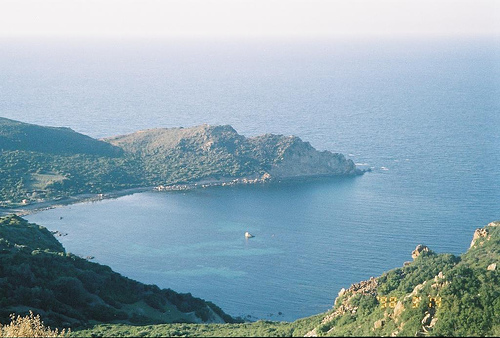

Location: El Tarf Province Map
Area: 800 km2
El Kala National Park, also known as the El Kala Biosphere Reserve, is one of Algeria's premier protected areas, situated in the extreme northeast of the country within El Tarf Province, near the town of El Kala and close to the Tunisian border. Spanning approximately 76,438 hectares (764 square kilometers), the park extends along 50 kilometers of Mediterranean coastline and encompasses a diverse mosaic of terrestrial, marine, and wetland environments. Established by Algerian decree in 1983, it was designated a UNESCO Biosphere Reserve in 1990, highlighting its global significance for biodiversity conservation. The reserve's total area, including marine zones, reaches about 133,740 hectares, with 84,340 hectares on land and 49,400 hectares at sea. It serves as a critical ecological crossroads in the Mediterranean basin, blending North African, European, and tropical influences, and supports a human population of around 87,000 residents who engage in activities like agriculture, fishing, and forestry.
The park's geography is characterized by a rich variety of
landscapes, including rugged mountains, dense forests, coastal dunes,
lagoons, and freshwater lakes, all set against a backdrop of
Mediterranean shores. The highest point is Djebel El-Ghorra, rising to
1,202 meters, providing a dramatic elevation gradient that influences
local microclimates. Average temperatures range from 9°C in winter to
30°C in summer, fostering a temperate Mediterranean climate with ample
rainfall to support lush vegetation.
Central to the park's ecosystems
are its six major lakes and wetlands, which form a vital network of
aquatic habitats: Lake Oubeira (2,200 hectares), Lake Tonga (2,600
hectares), Lake Mellah (860 hectares, the only lagoon in Algeria
directly connected to the sea), Marais de Bourdim (11 hectares), Blue
Lake (3 hectares), and Black Lake (6 hectares). These wetlands are
interspersed with marine zones featuring coral reefs, Posidonia seagrass
meadows, and abundant fish populations, creating a seamless transition
from freshwater to saltwater environments. The forests dominate the
inland areas, with mountainous woodlands giving way to coastal dunes and
marine strips, making the park a unique "biological crossroads" where
Mediterranean (42.38% of species), transitional (26.66%), Scandinavian,
endemic, cosmopolitan, and tropical elements converge.
El Kala National Park boasts extraordinary botanical diversity, with inventories from 1996 to 2010 documenting 1,590 plant species across various groups, including 1,050 spontaneous vascular plants, 77 introduced or cultivated vascular plants, 175 mushrooms, 117 lichens, 70 algae, 93 phytoplankton, and 8 vegetable sailor species listed under international protection protocols. Among these, 27 vascular plants are protected nationally, 80 are endemic to North Africa, and 20 appear on the IUCN Red List, underscoring the park's role in preserving rare flora. Dominant tree species include cork oak (Quercus suber), Zeen oak (Quercus canariensis), kermes oak (Quercus coccifera), and Aleppo pine (Pinus halepensis), alongside riparian species like glutinous alder, willows, and white poplar. Introduced trees such as eucalyptus, acacias, maritime pines, and bald cypresses add to the mix, while notable rarities include Euphorbia dendroides, Orchis provincialis (presence uncertain), and the truffle Terfezia arenaria found in littoral dunes. Lichens (52 protected) and mushrooms further enrich the understory, with species like Geranium atlanticum and Campanula alata highlighting endemic values. This floral wealth supports socio-economic uses, such as cork harvesting, medicinal plants, and food sources like olive oil and truffles.
The park's faunal diversity is equally impressive, with 718 animal species recorded, encompassing 43 mammals, 24 reptiles and amphibians, 215 insects, 214 birds, 128 fish, and 94 zooplankton species. Mammals include 40 species overall, with 17 protected, such as the critically endangered Barbary red deer (Cervus elaphus barbarus), whose population has dwindled to fewer than 30 individuals in the wild—making the park its last natural refuge in Algeria and Tunisia. Breeding programs have produced over 50 captive individuals by 2002 to aid recovery. Avian life is prolific, with 25 raptors, 64 freshwater birds, 9 marine birds, and a total of 214 species (87 protected), including waterbirds, forest dwellers, and migrants; the park hosts over 60,000 migratory birds each winter. Reptiles and amphibians number 24 (3 protected), insects 215 (13 protected), and fish 128 (9 protected, with 104 marine and 24 freshwater). Zooplankton includes 55 mollusks and 33 crustaceans, supporting the aquatic food web. Economically, fauna like fish, mollusks, waterbirds, and deer provide resources for local communities through sustainable fishing, snail harvesting, and potential regulated hunting tourism.
As a UNESCO Biosphere Reserve, El Kala emphasizes integrated conservation, research, and sustainable development, with ongoing studies on forests, waterbirds, and dragonflies. Several wetlands are Ramsar sites of international importance: Lake Oubeira (1983), Lake Tonga (1983), Black Lake Peat Bog (2003), Lake Mellah (2004), and Bourdim Marsh (2009). From 1994 to 1999, a World Bank-funded project aimed to mitigate biodiversity degradation through natural resource management. Despite these efforts, threats persist, including habitat loss from proposed infrastructure like highways that could bisect sensitive areas, overexploitation of resources, and limited recent research updating species inventories. Conservation strategies focus on rational exploitation, environmental education, and protecting flagship species like the Barbary red deer.
The park integrates human livelihoods, with residents practicing agriculture, animal husbandry, apiculture, fishing, and forest product collection. Culturally, it preserves historical inheritance and promotes sustainable economic uses, such as heather for clothing, medicinal plants, and tourism. Tourism draws about 30,000 visitors annually, offering guided tours, birdwatching from dedicated towers, sea diving in marine areas, hiking through forests and wetlands, and visits to an eco-museum and mini-zoo for educational insights. The best times for visits are spring (March-May) and early autumn (September-October) for milder weather and peak biodiversity viewing. Efforts continue to boost foreign tourism while balancing conservation needs.